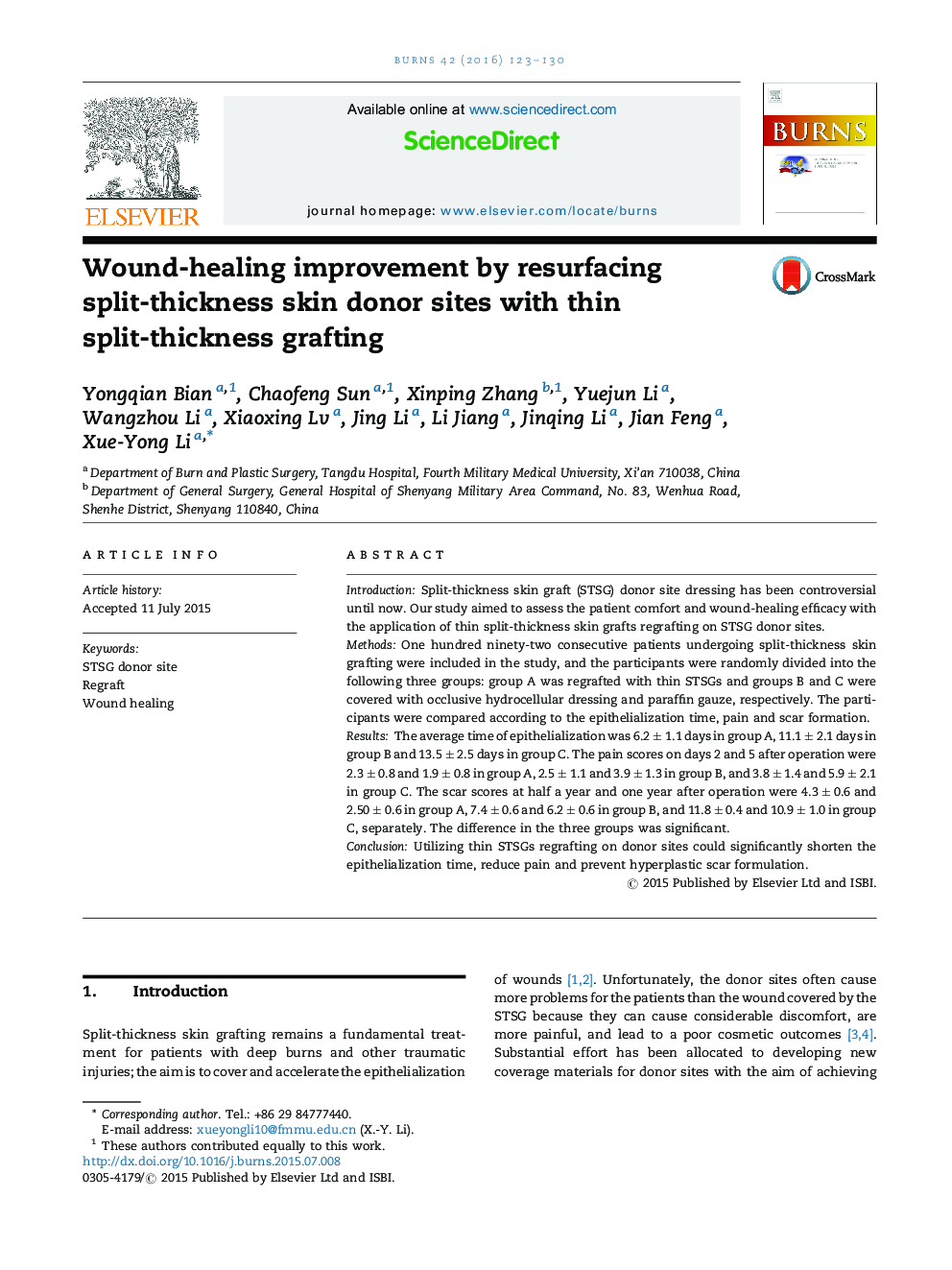| کد مقاله | کد نشریه | سال انتشار | مقاله انگلیسی | نسخه تمام متن |
|---|---|---|---|---|
| 3104180 | 1191644 | 2016 | 8 صفحه PDF | دانلود رایگان |

• The split-thickness skin graft (STSG) donor site dressing is controversial.
• Utilizing thin STSGs regrafting on donor sites generated a satisfactory clinical effect.
• No skin discoloration was observed, and the skin durability was close to normal.
• This method is well worth a wide application.
IntroductionSplit-thickness skin graft (STSG) donor site dressing has been controversial until now. Our study aimed to assess the patient comfort and wound-healing efficacy with the application of thin split-thickness skin grafts regrafting on STSG donor sites.MethodsOne hundred ninety-two consecutive patients undergoing split-thickness skin grafting were included in the study, and the participants were randomly divided into the following three groups: group A was regrafted with thin STSGs and groups B and C were covered with occlusive hydrocellular dressing and paraffin gauze, respectively. The participants were compared according to the epithelialization time, pain and scar formation.ResultsThe average time of epithelialization was 6.2 ± 1.1 days in group A, 11.1 ± 2.1 days in group B and 13.5 ± 2.5 days in group C. The pain scores on days 2 and 5 after operation were 2.3 ± 0.8 and 1.9 ± 0.8 in group A, 2.5 ± 1.1 and 3.9 ± 1.3 in group B, and 3.8 ± 1.4 and 5.9 ± 2.1 in group C. The scar scores at half a year and one year after operation were 4.3 ± 0.6 and 2.50 ± 0.6 in group A, 7.4 ± 0.6 and 6.2 ± 0.6 in group B, and 11.8 ± 0.4 and 10.9 ± 1.0 in group C, separately. The difference in the three groups was significant.ConclusionUtilizing thin STSGs regrafting on donor sites could significantly shorten the epithelialization time, reduce pain and prevent hyperplastic scar formulation.
Journal: Burns - Volume 42, Issue 1, February 2016, Pages 123–130